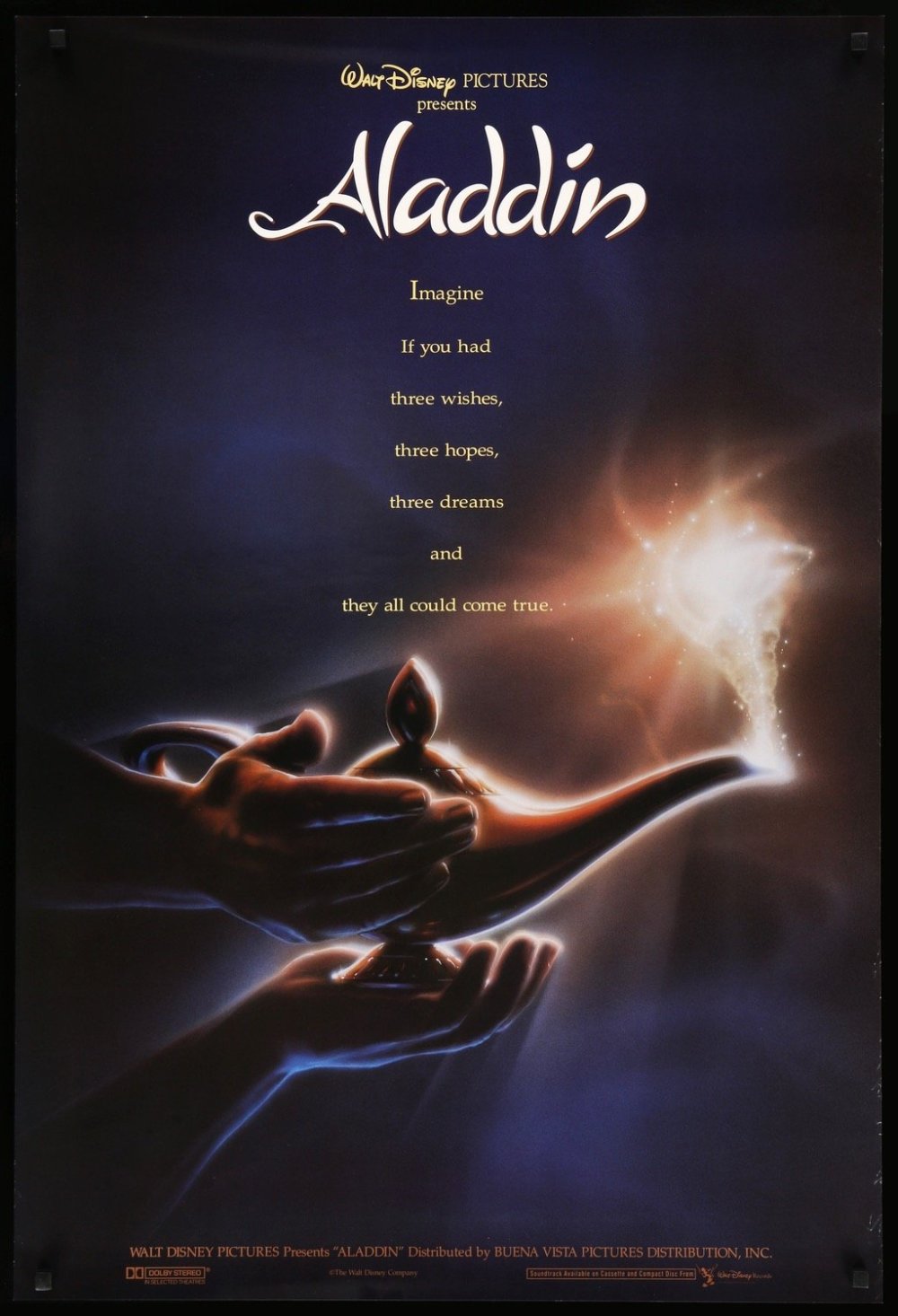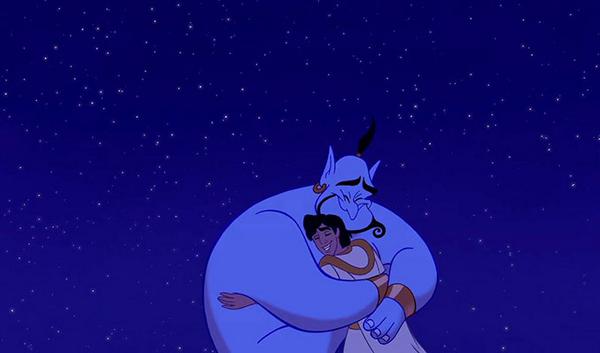
Dedicated to the lives of Howard Ashman, Robin Williams, and my father, Joseph Connolly.
Howard Ashman and Robin Williams didn’t deserve the endings they were unfortunately destined for.
On March 14th, 1991, just a few months before Beauty and the Beast was about to premiere at the New York Film Festival (the first of its kind to do so), Howard Ashman passed away due to the complications of AIDS. It was more than a devastating loss for the studio at the time; it was as if a part of the Walt Disney Company had also died as well. Most of what was responsible for the launch of the Disney Renaissance rested on Ashman’s shoulders. Without his creative ingenuity and brilliant sense of leadership, the rest of the films in the Disney Renaissance felt like something was missing. And that something was Ashman’s creative spark, no matter how good the rest of the films in this era were.
{Side-note: “Proud Of Your Boy”, a song that was cut from the final draft of Aladdin, is among Menken and Ashman’s most heartfelt work, and I’m so glad that it got a life in the Broadway adaptation.}
And then there’s Robin Williams.
I really wish I didn’t have to write this.
On August 11th, 2014, almost a year after he was diagnosed with Parkinson’s disease, Robin Williams committed suicide. I made the mistake of watching clips of his astonishing work as the Genie on YouTube the day he died. The minute it got to him saying “No matter what anybody says, you’ll always be a prince to me”, I started crying in my bedroom. Any death of someone you admire or love, whether that person is a celebrity or not, comes with at least a tinge of heartbreak, but Robin Williams’ death was something else entirely. I had no idea he was suffering the way he did, and when he died, it further transformed my entire worldview on how I saw people.
I always saw my dad in the Genie, which most likely caused the crying in my bedroom that day. The Genie shared several characteristics with my dad; one of them being the fact that underneath all of the eccentrics he provided lied someone with a huge heart and a wish of his own. One of his wishes was to publish a musical he wrote called Middle-Life Crisis–a musical focusing on the middle school experience–for professional purposes. Unlike the Genie’s wish, my dad’s wish never came to pass, but it has been performed in middle schools within the Connecticut area, so at least it had some exposure over the years.
It’s weird to be talking about loss in regards to a film that’s mostly an enjoyable animated musical comedy, but one of the ideas that Aladdin possesses is how important it is to tell the truth. And I feel it is my duty as a writer to tell as much of the truth as possible while entertaining and respecting the readers I interact with. I don’t shy away from topics like grief and loss in my posts, especially when discussing a film that’s consistently reminding me of how much of an incredible impact these artists have made towards billions of people around the world. We never deserved artists like Howard Ashman and Robin Williams, and yet the world gifted us with their talents.
And we couldn’t be more grateful, for we never had friends like Ashman and Williams before.
The songs that Ashman wrote for Williams to perform represent some of the catchiest tunes ever written in Disney’s repertoire. Both “Friend Like Me” and “Prince Ali” have unbelievably imaginative structures and wordplay that could have only been created for a character like the Genie. And make no mistake, when you match the energy of the visuals with those songs, they truly feel like game-changers in the history of Disney animation. They’re so much fun to listen to, and despite the loss of both Ashman and Williams, they never fail to put a smile on my face respectively.
The rest of the songs’ lyrics are written by Tim Rice, and while they obviously can’t match the brilliance of Ashman, they are still strong enough to stand on their own terms. “A Whole New World” is the clear winner from Rice’s contributions. When paired with the iconic sequence of Aladdin and Jasmine flying on a magic carpet for the first time, it’s the stuff of Disney magic. It’s one of my favorite moments in Disney animation that continues to make me feel goosebumps. At the very least, I felt goosebumps during this re-watch, and probably will on further viewings.
Goosebumps induce because I really like Aladdin and Jasmine as characters, even if they do take some time to grow on me as the film progresses. It’s fascinating to note that Jasmine was not telling the truth before Aladdin does the exact same thing later on in the film. The only difference was that she was disguising herself as a peasant in order to escape from palace life, while Aladdin was disguising himself as a prince in order to win her heart. Yet, despite their difference in class structure, once the truth is revealed in the end, their love is strong enough to shine through. It’s the stuff that Disney fans go crazy for.
The film has a colorful assortment of supporting characters, which range from humans to animals to even magic carpets. Yes, a magic carpet is one of the best animated Disney characters in history, and he (she?!) doesn’t even have a face! Iago also gets several laughs from me with his crazy antics and shenanigans; I especially love it when he’s able to voice several other characters in the film, such as Jasmine and especially Jafar (“On a scale of one to ten, YOU are an eleven.). And yeah, Jafar is an absolutely incredible villain who’s not only drawn brilliantly; he’s also unafraid to show his true, evil colors every now and then (“You’re speechless, I see–a fine quality in a wife.”).
{Side-note, because I haven’t talked enough about how awesome of a character Jafar is: I saw Jonathan Freeman play Jafar in Aladdin on Broadway, and it was an experience. He even did the iconic laugh. Incredible.}
The animation and color scheme throughout every inch of this film is a feast for the eyes. I’ve mentioned before that the animation pops the best during its musical sequences, but there are awe-inspiring images of Aladdin just looking out at the palace at night from his home, as well as how the marketplace looks like during the daytime. But yes, anything involving the Genie is extraordinary; it’s a challenge to figure out whether the animation or Williams’ delivery came first, but regardless, the amount of effort went into Genie’s magic acts are all-timers. The animators over at Disney had a lot to be proud of during that time.
If the film has any problems, I do think the film has a rather slow first act, which is ironic considering I used to be terrified of watching certain aspects in the first act (Let’s just say I had to use a night light for a few years thanks to a certain Cave of Wonders). Nowadays, I grow impatient getting through the typical Disney elements–not to mention some pretty outdated CGI animation–before getting to the best parts. For me, it’s not really until they encounter the Magic Carpet that the film picks up speed, and once the Genie enters, the rest is pretty much history.
I sometimes think about why the Genie works as well as he does in Aladdin. It’s not even just the fact that, even with a bit of computer assistance here and there, his magic feels like it always shines through the magic of hand-drawn animation. Nor is it just the fact that his comic timing influenced a generation’s worth of future animated films like the Shrek franchise. The Genie works beautifully because you can take out the comedic aspect and still have a compelling character. Just like Aladdin and Jasmine, all he wants to do is be free and make his own choices in life. It’s this bit of character that gives the Genie a sense of humanity that is so rare in comic-relief characters.
And it’s this sense of humanity that’s moving enough to make me cry in my bedroom.
I can’t thank you enough, Genie.
